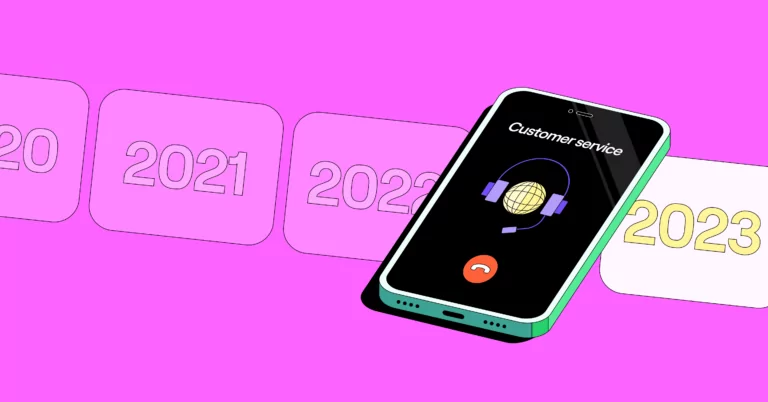“When I was a kid, we had to go to the store or office and ask a business to fix something in person…”
“Yeah, well, I actually had to make a phone call — from my home phone!”
(Audience gasps in horror.)
True story. Although it may seem so to many Gen Zers, it’s not even a scary movie. Today, even a phone call is a big ask.
Technology is evolving the customer service landscape, and small and large businesses either adopt a customer-centric approach to customer service or lose customers to companies that are. Read on for three ways emerging tech has changed how small businesses care for their customers.
1. Customers take smartphones everywhere
Customers want service on their terms. And increasingly, “on their terms” translates to the smartphone.
Add the aversion many millennials and Gen Z have to talking on the phone, and you’ll find that SMS customer service volume increased by 28% in 2021, according to Zendesk’s CX Trends Report.
Text messaging is often preferred over phone calls as it allows for more flexibility and convenience. This is especially true in customer support, where it can be cost-effective and help operators handle multiple conversations at once.
According to a study by Forrester, customer service calls can be significantly more expensive than text exchanges. Since texting keeps getting more efficient — allowing businesses to help more customers in less time — it’s an attractive customer service option for both customers and businesses.
Takeaway #1: Service should be a text away.
2. Customers want to DIY their troubleshooting
Sure, you spend training after training teaching your team to be hospitable, empathetic, and responsive. They’re prepared to deliver a great experience to even the most difficult customers. But how can you provide outstanding service to customers who prefer to avoid talking to your team?
Not all folks are after that experience anymore. Customers want to feel valued, sure. But they also want answers. If self-service is the fastest way to get to those answers, customers would rather do the work themselves.
Self-service feels like a lifesaver if you’ve ever had a water heater go haywire at 6 AM while you’re trying to get ready for work. You need answers — now.
Self-service options work 24/7, satisfying that 69% of customers who would rather attempt to fix things themselves before they need to contact your team.
But don’t expect them to read a long, dry instruction manual. Instead, rely on chatbots and AI voice greetings to direct customers to the right answers. According to Oracle, 87% of firms using voice assistant and chatbot technology will get significant business value within one year.
By making your self-service tools easy to access and use, your customers get the answers they need when they need them, all while freeing up your team to focus on speaking with customers who do want to talk through their support needs.
Takeaway #2: Make self-service customer support frictionless.
3. Customers want special treatment
A couple of decades ago, people were fine with waiting for help. Today? Not so much.
This rise in customer expectations is due to “expectation transfer” — a phenomenon that describes the effect of numerous businesses competing against one another to offer a superior customer experience.
Now, more than 60% of customers say they’ve raised the bar on their customer service standards.
That may even be under-selling it. The Intercom Customer Service Trends Report for 2023 reviewed things from the other angle: the perspective of customer support teams. And they say — to the tune of 83% — that expectations have gone up.
Customers get frustrated with repetitive tasks like entering customer IDs or stating their names, and they get annoyed with repeating their questions repeatedly. Even if it’s more convenient for your workflow, they will tire of it quickly.
Now, teams can save customer preference notes in customer relationship systems (CRMs), collaborate on customer problems in internal threads, and stay in the loop regarding customer queries by listening to call recordings. From birthdays and life events to shipping preferences and customer service history, technology lets
According to Oracle, 79% of Gen Z and millennials rate personalized customer service experiences as important.
Again, that speaks to the concept of the “expectation transfer.” The generations already accustomed to personalized experiences will only expect personalization in customer service to increase as they age.
Takeaway #3: Get to know your customers and use technology to keep track of their preferences.
Dive into shifting customer service expectations
As the customer service landscape experiences a seismic shift — driven by technological innovations — today’s customers want service at their fingertips. The message is clear: be a text away, make self-service frictionless, and know your customers well enough to personalize their experience.
Are you ready to meet your customers where they are and give them the service they’ve come to expect? Check out our guide to the four top trends of 2023 for more information about shifting customer service trends and how to future-proof your small business with a customer-centric approach.

